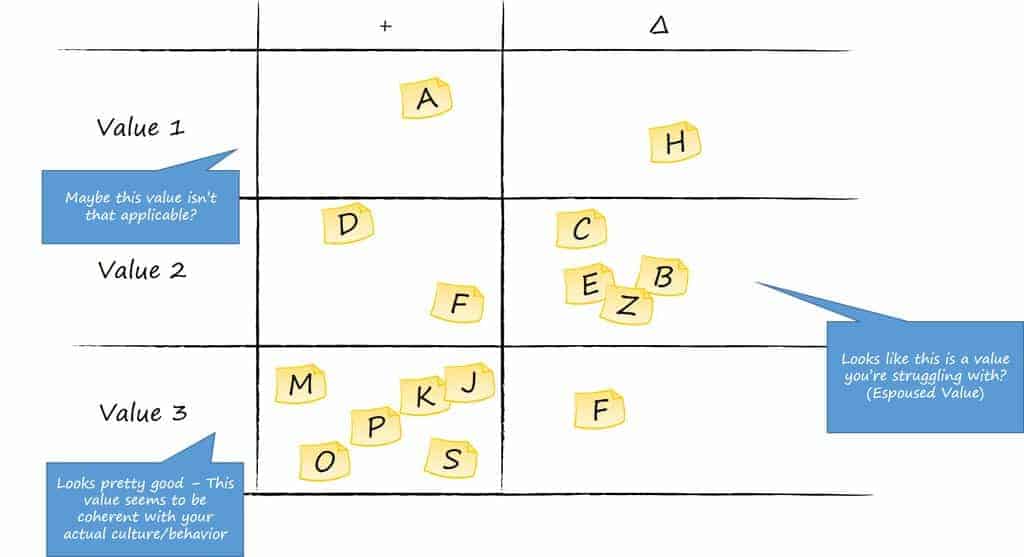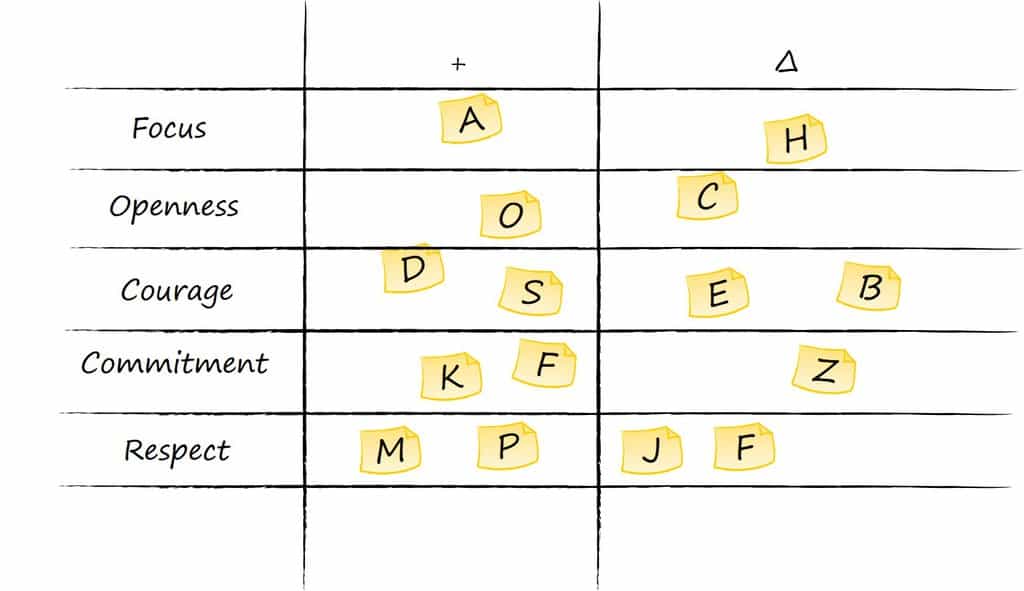Values and principles can often seem lofty and intangible so many agile practitioners prefer to focus on tools and practices. That’s understandable but unfortunate. Because values and principles have the potential to provide us with clarity and guidance that transcends what practices and frameworks can achieve. Ideally – part of your empiric inspection and adaptation process should explore whether you are living according to your values/principles. To achieve that you can try a value-based retrospective.
Create a matrix of your values as rows, and some classic retro categories such as plus/delta as columns. Then run a “generate insights” activity in which you try to see what you’re doing that upholds a value or flies in the face of it and could be improved. Afterward continue the retrospective as usual by deciding what to focus on, getting to the root cause, coming up with experiments, and committing to some change.

This can help in a couple of ways:
One question you should probably be asking is “What values should I use?”

Regardless of what set of values you choose – make sure you understand the value of each value. E.g. how does the Scrum value “Courage” benefit you as a team? Why is it required in order to achieve high-performance? This can be a warm-up activity of the retrospective – each person trying to lay out his perspective on this and then sharing notes.
You could also use this retrospective style to bring in sets of values as models to look at while trying to improve. What I mean by that is you could run a retrospective using a certain set of values even if they’re not formally your values. For example, Even if you’re not doing Scrum, running a retrospective using the Scrum Values would be educational, would probably inspire some interesting discussions, and drive some useful experiments. In summary – running a values-based retrospective can be a great way to run a different style of a retrospective – one that is one hand focusing on the roots of what we’re trying to do and on the other hand grounded in our actual behaviors and what to do about them.
Request for additional information and prices
Subscribe to our newsletter, and stay updated on the latest Agile news and events